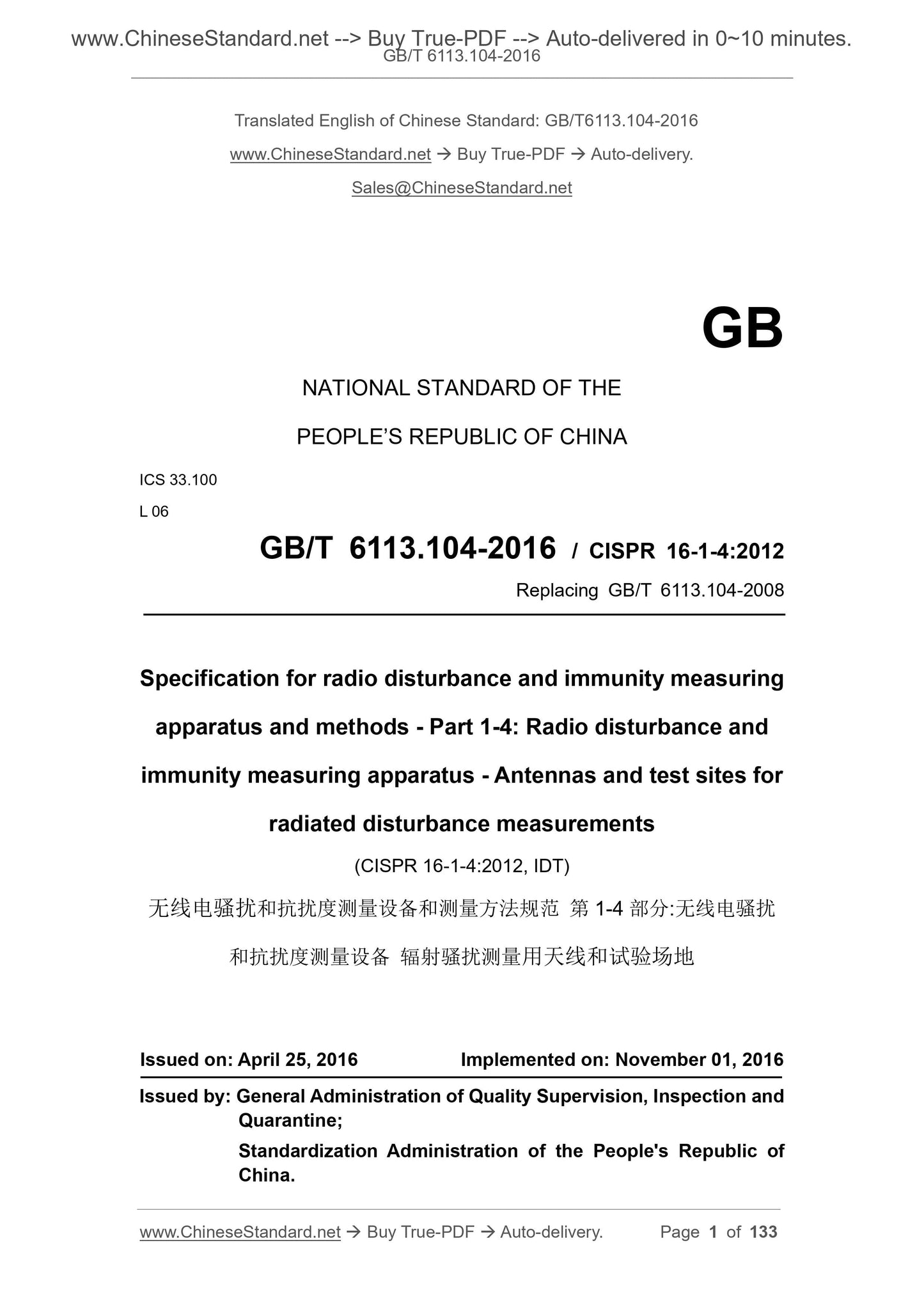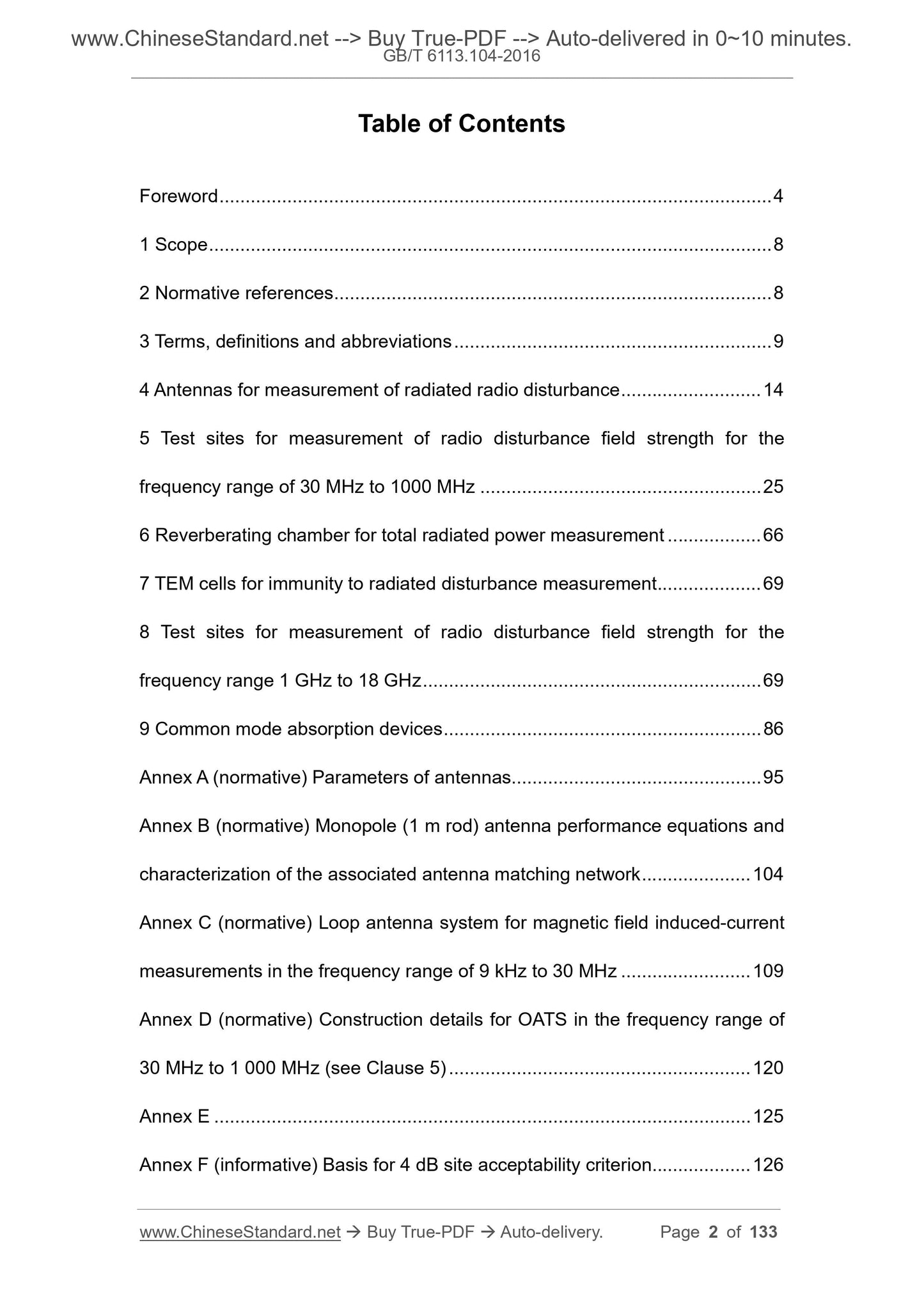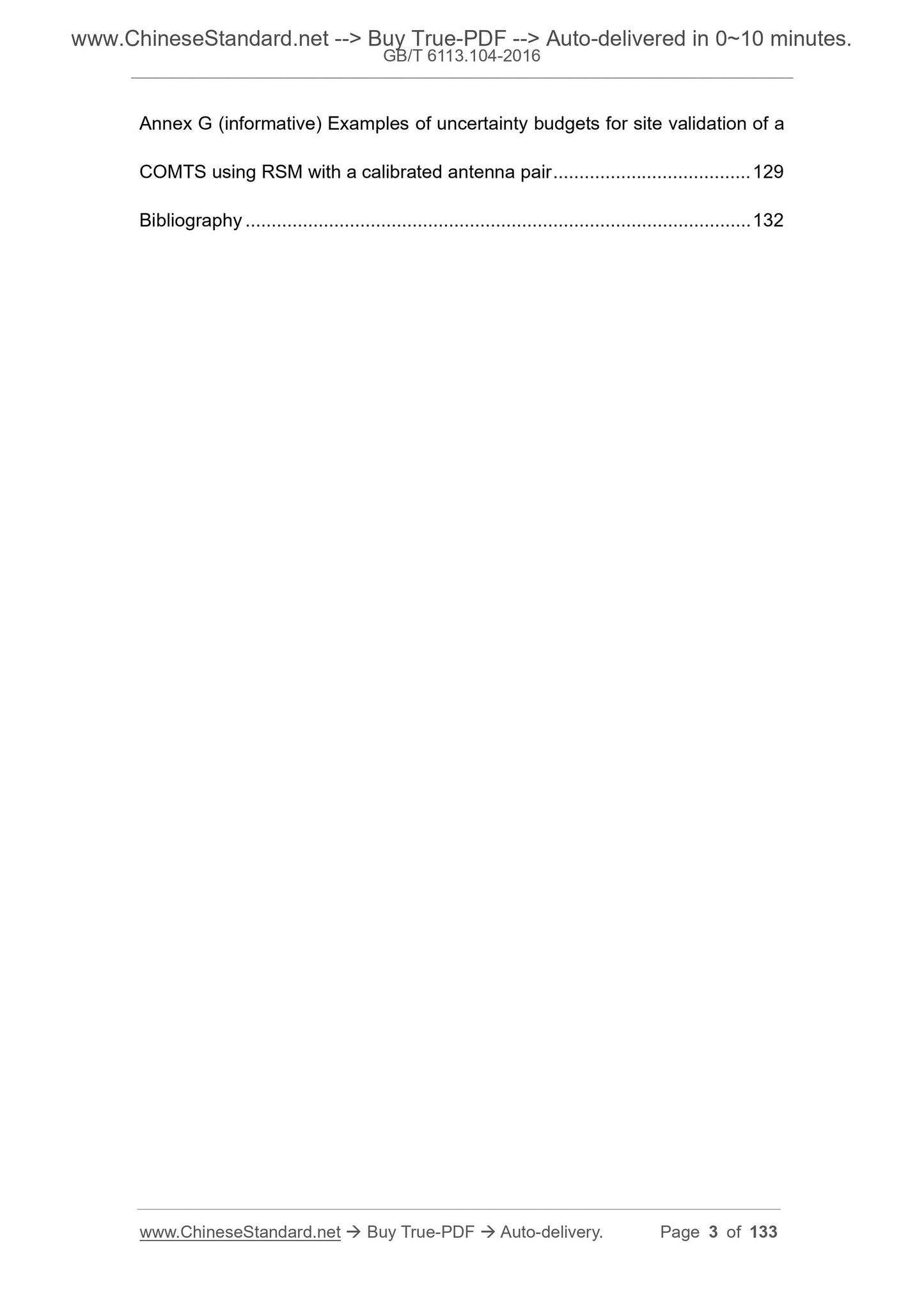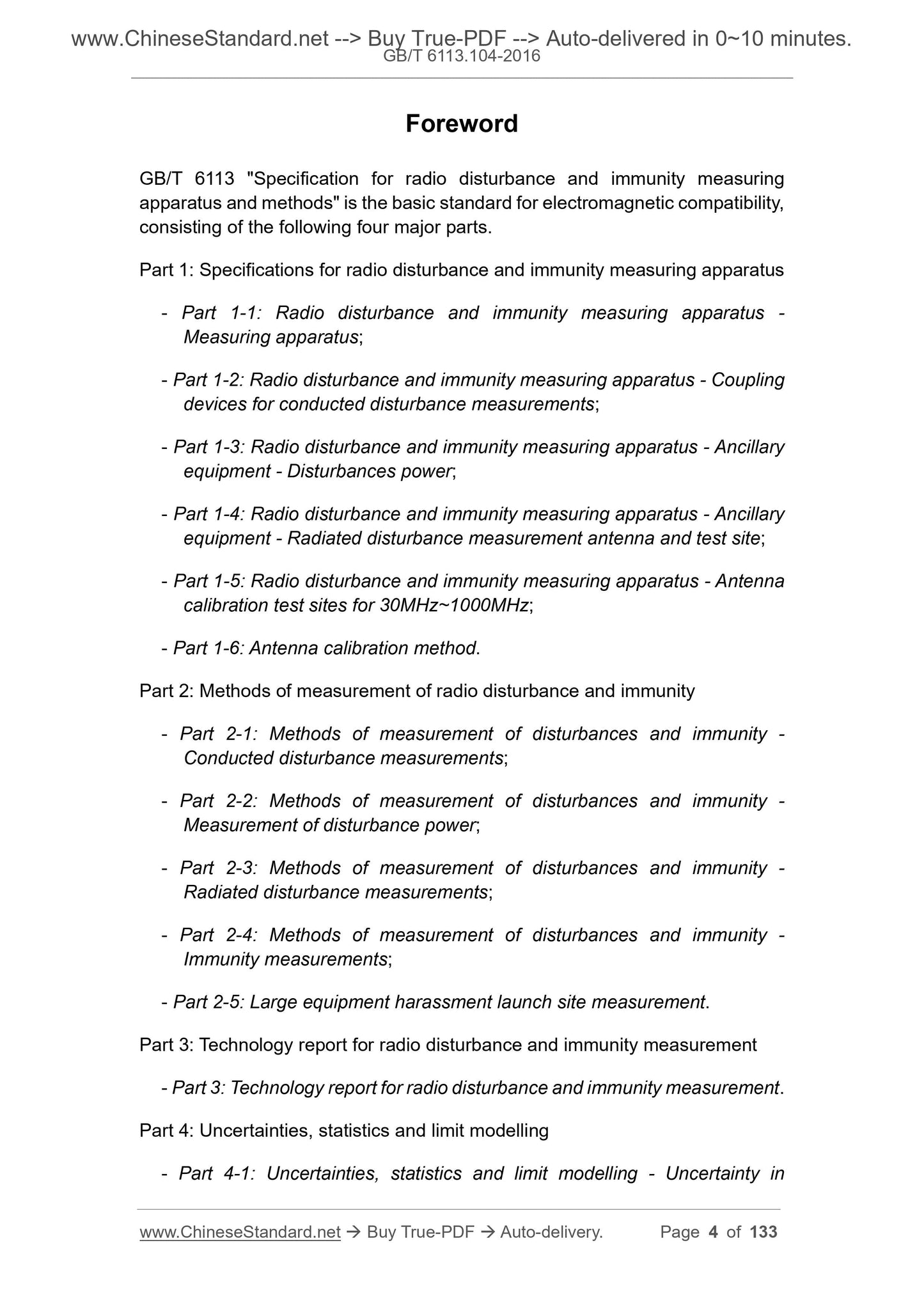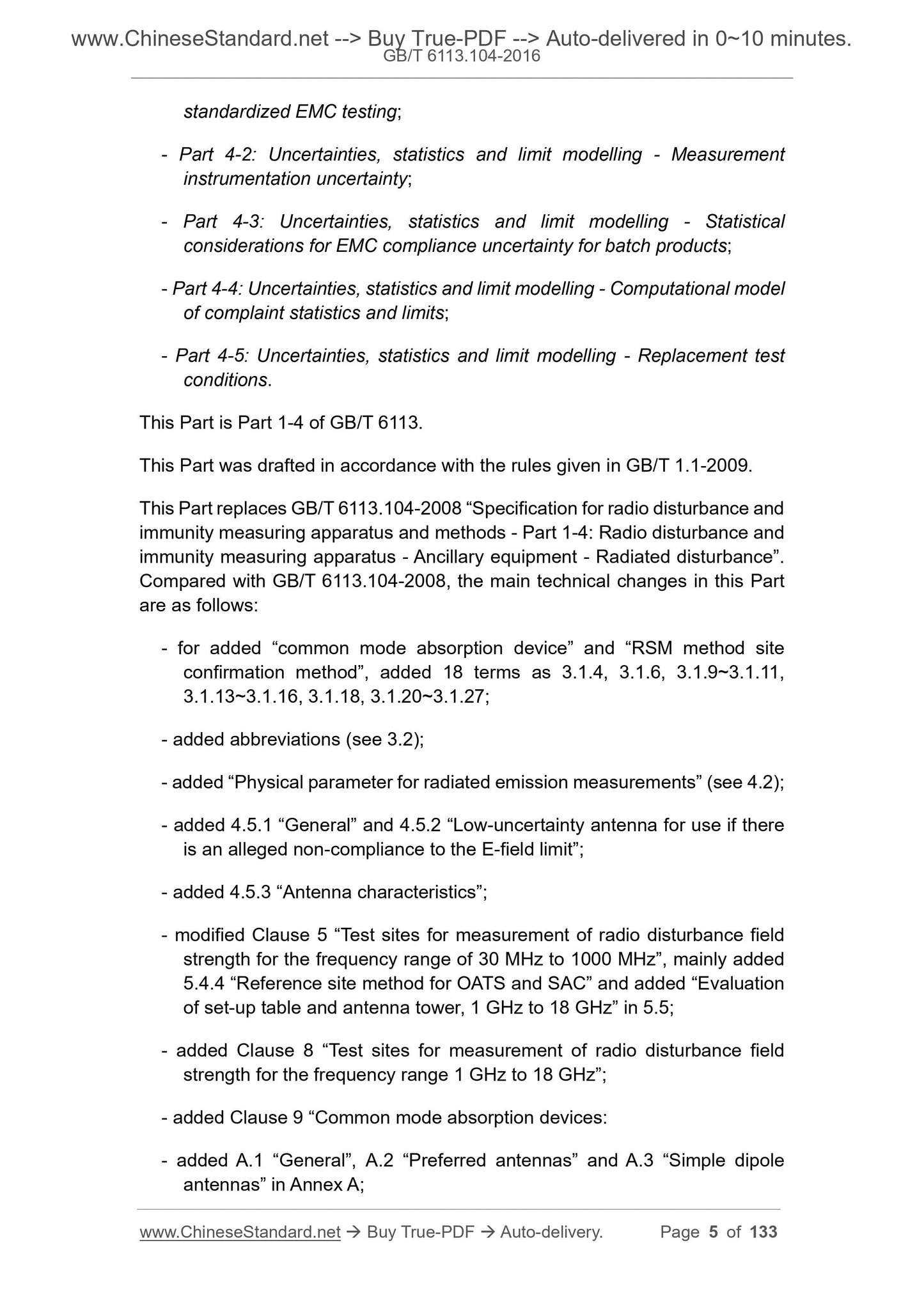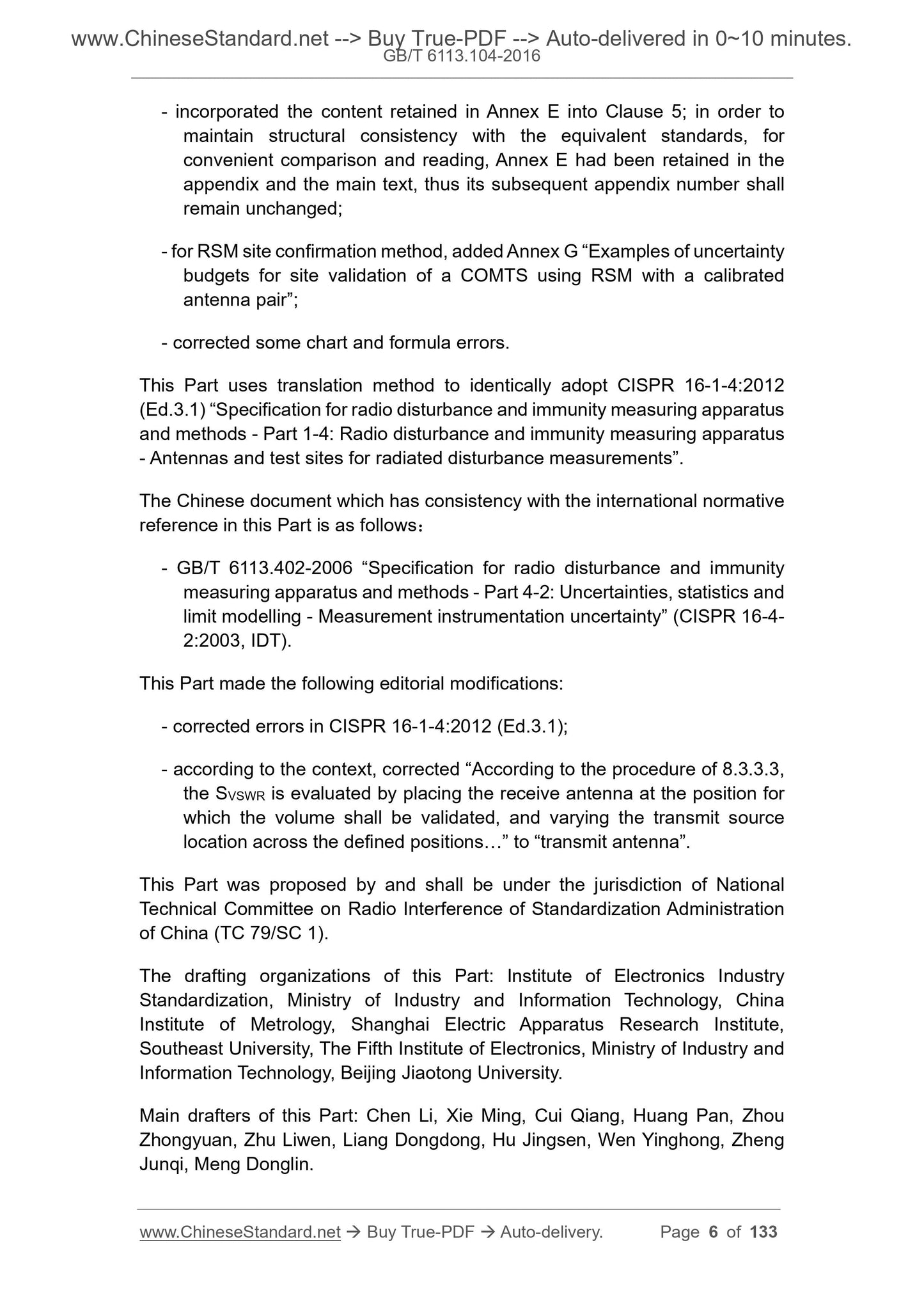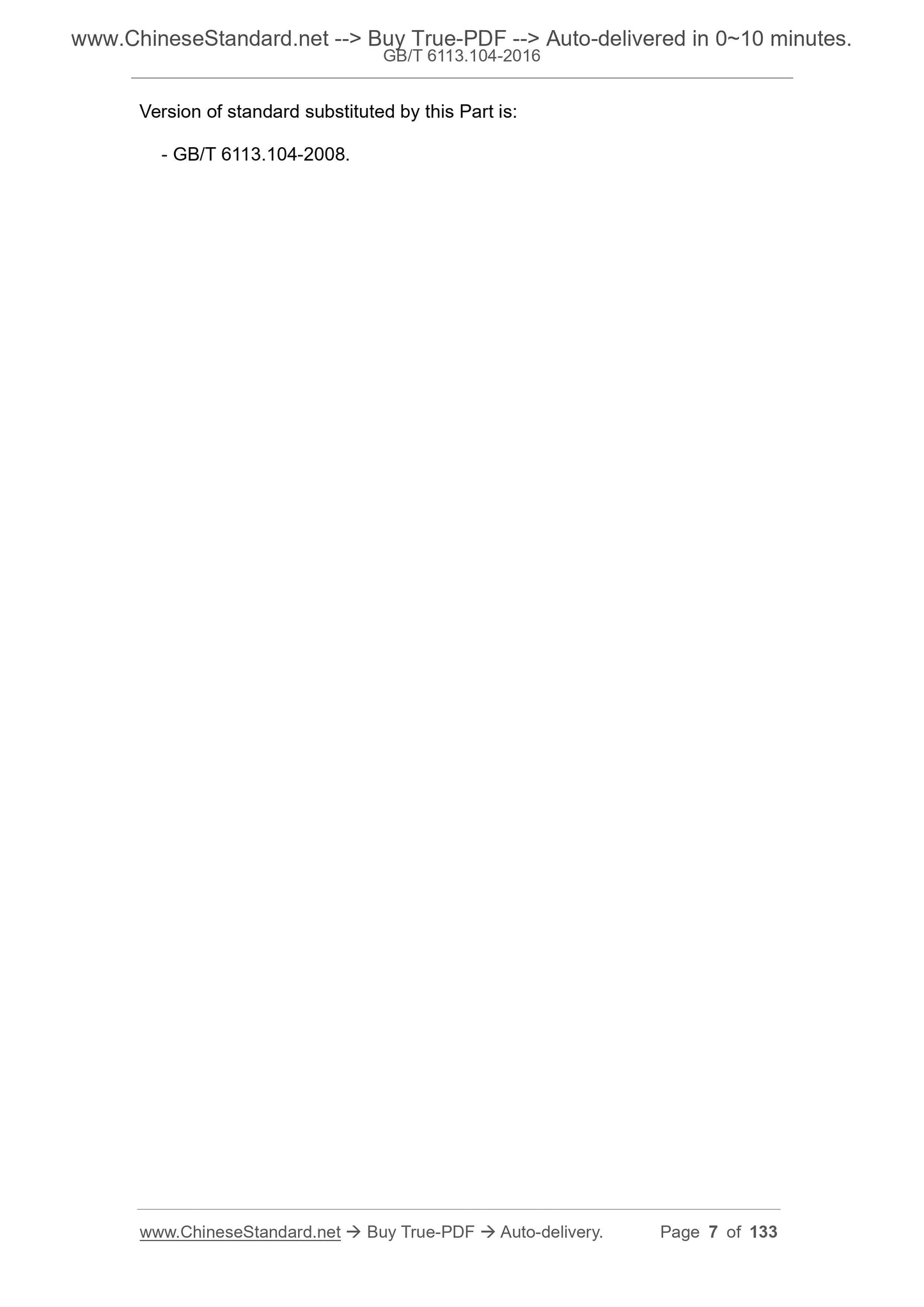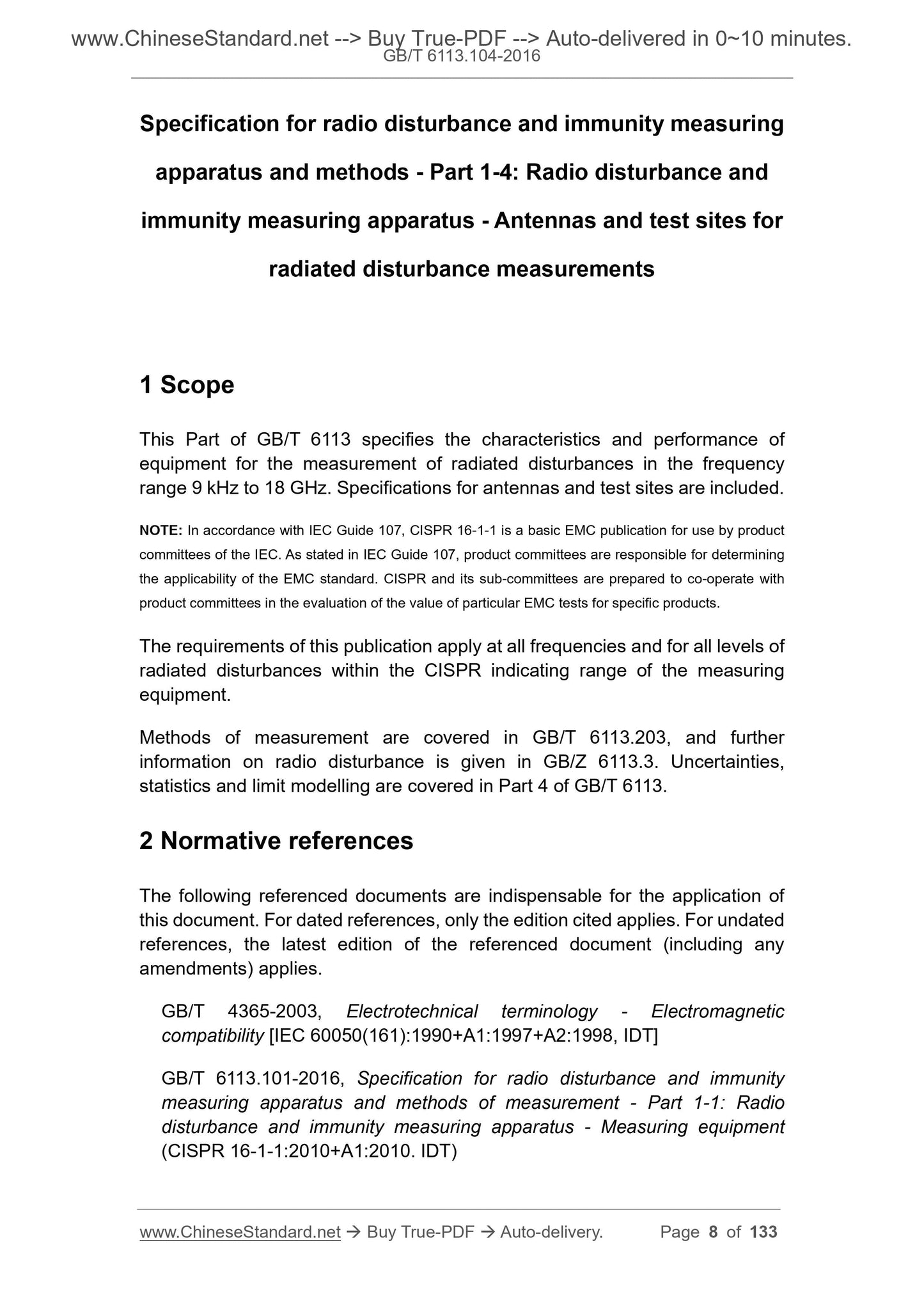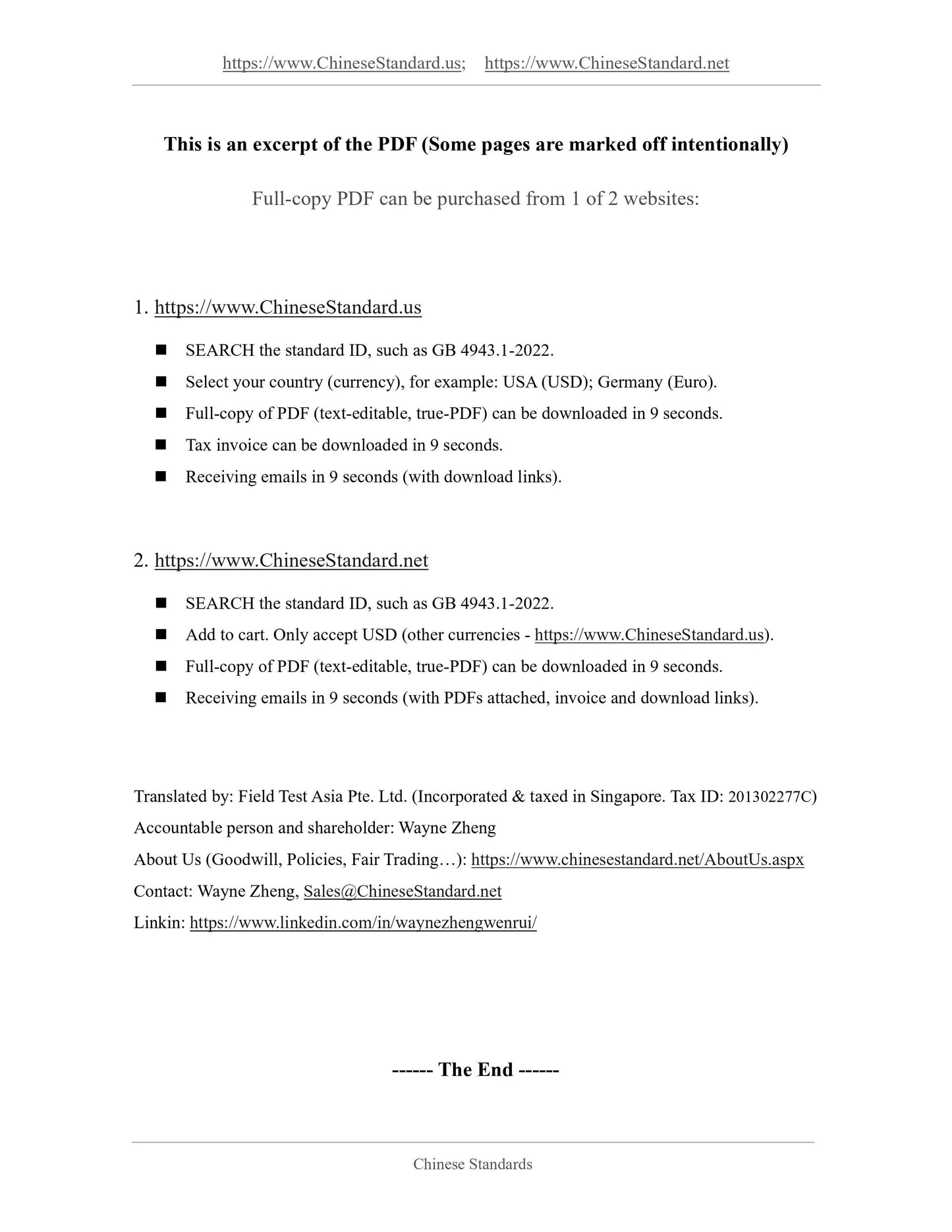1
/
of
9
PayPal, credit cards. Download editable-PDF and invoice in 1 second!
GB/T 6113.104-2016 English PDF (GB/T6113.104-2016)
GB/T 6113.104-2016 English PDF (GB/T6113.104-2016)
Regular price
$610.00
Regular price
Sale price
$610.00
Unit price
/
per
Shipping calculated at checkout.
Couldn't load pickup availability
GB/T 6113.104-2016: Specification for radio disturbance and immunity measuring apparatus and methods -- Part 1-4: Radio disturbance and immunity measuring apparatus -- Antennas and test sites for radiated disturbance measurements
Delivery: 9 seconds. Download (and Email) true-PDF + Invoice.Get Quotation: Click GB/T 6113.104-2016 (Self-service in 1-minute)
Newer / historical versions: GB/T 6113.104-2016
Preview True-PDF
Scope
This part of GB/T 6113 specifies the characteristics and performance requirements of the radiation disturbance measuring equipment. The applicable frequency range is 9 kHz~18GHz. This section includes measurement antennas and test site specifications.
Note. According to the IEC 107 guidelines, CISPR16-1-1 is the basic EMC standard used by the IEC product committee. As stated in the IEC 107 guidelines, products
The committee is responsible for determining the applicability of the EMC standard. CISPR and its subcommittees (corresponding to the domestic SAC/TC79 technical committee and
Its subcommittees work with these product committees to evaluate the value of specific trials for their specific products. The above product committee corresponds to the country
Internal related product technical committee.
The requirements of this section apply to all frequencies and all levels of radiated disturbances within the CISPR indication range of the measuring equipment.
The measurement method of radiated disturbance is specified in GB/T 6113.203. More information on radio disturbances is in GB /Z 6113.3
Given in . Uncertainty, statistics, and limit modeling are given in Section 4 of GB/T 6113.
Basic Data
| Standard ID | GB/T 6113.104-2016 (GB/T6113.104-2016) |
| Description (Translated English) | Specification for radio disturbance and immunity measuring apparatus and methods -- Part 1-4: Radio disturbance and immunity measuring apparatus -- Antennas and test sites for radiated disturbance measurements |
| Sector / Industry | National Standard (Recommended) |
| Classification of Chinese Standard | L06 |
| Classification of International Standard | 33.100 |
| Word Count Estimation | 95,944 |
| Date of Issue | 2016-04-25 |
| Date of Implementation | 2016-11-01 |
| Older Standard (superseded by this standard) | GB/T 6113.104-2008 |
| Quoted Standard | GB/T 4365-2003; GB/T 6113.101-2016; GB/T 6113.105-2008; GB/T 6113.203-2016; GB/T 17626.20-2014; CISPR/TR 16-3-2003+A1-2005+A2-2006; CISPR 16-4-2 |
| Adopted Standard | CISPR 16-1-4-2012, IDT |
| Regulation (derived from) | National Standard Announcement No |
| Issuing agency(ies) | General Administration of Quality Supervision, Inspection and Quarantine of the People's Republic of China, Standardization Administration of the People's Republic of China |
| Summary | This standard specifies the characteristics and performance requirements of radiation harassment measurement equipment, the applicable frequency range of 9 kHz ~ 18 GHz. This standard includes measuring antenna and test site specifications. The requirements of this standard apply to all frequencies and all levels of radiation harassment within the CISPR indication range of the measuring equipment. Radiation harassment measurement method is specified in GB/T 6113.203. More information on radio harassment is given in GB/Z 6113.3. Uncertainty, statistics, and limit modeling are given in Section 4 of ISO/IEC 15113. |
Share
